AMD Ryzen Threadripper 3960X AIDA64 CPU Benchmarks
Benchmark pages of AIDA64 Extreme provide several methods to measure system performance. These benchmarks are synthetic, so their results show only the theoretical (maximum) performance of the system.
CPU and FPU benchmarks of AIDA64 Extreme are built on the multi-threaded AIDA64 Benchmark Engine that supports up to 1280 simultaneous processing threads. It also supports multi-processor, multi-core and SMT (Hyper-Threading) enabled systems. More information about these benchmarks can be found here.
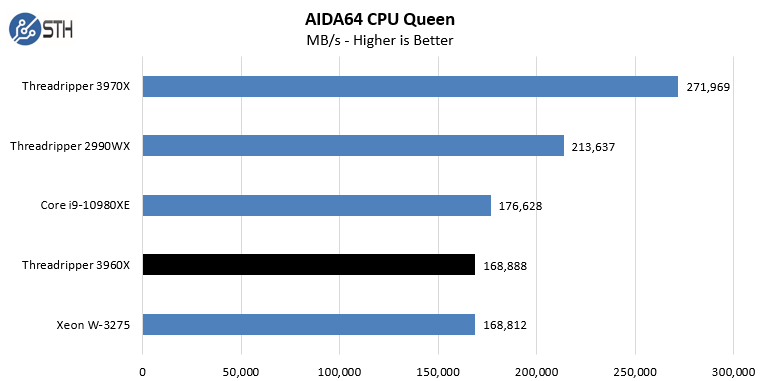
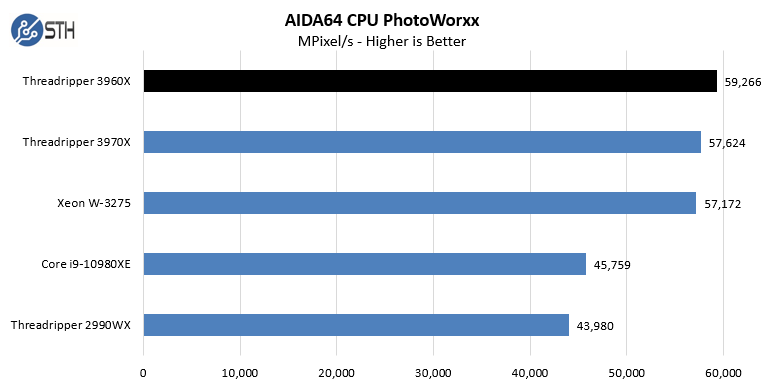
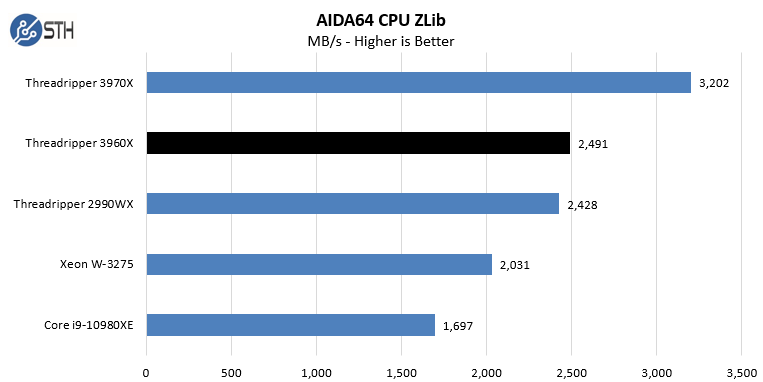
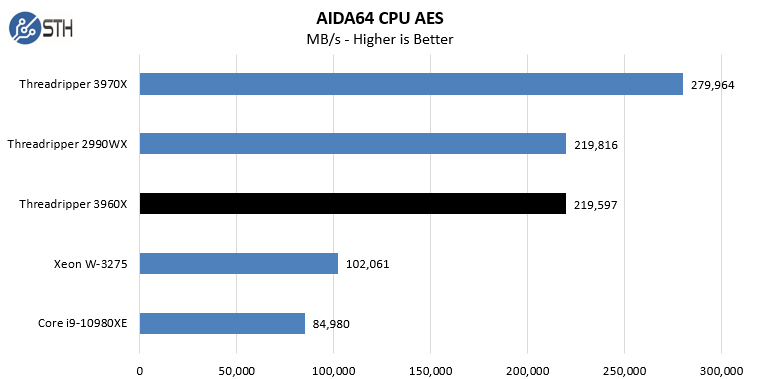
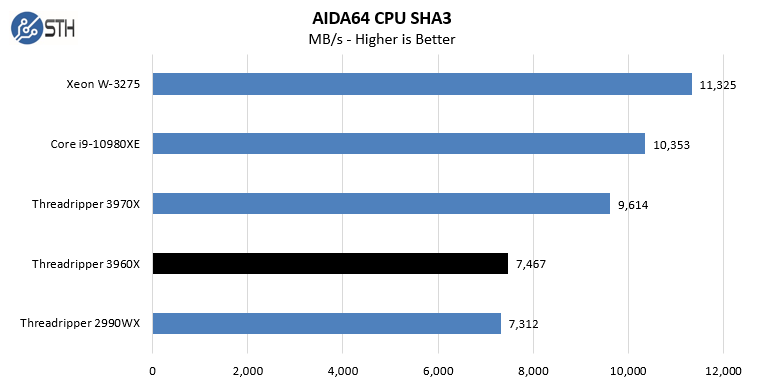
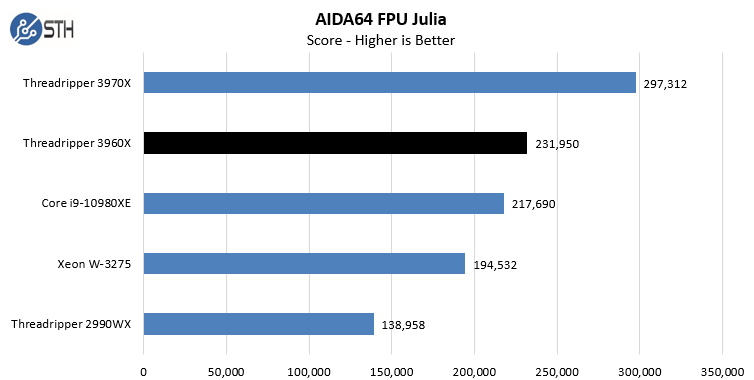
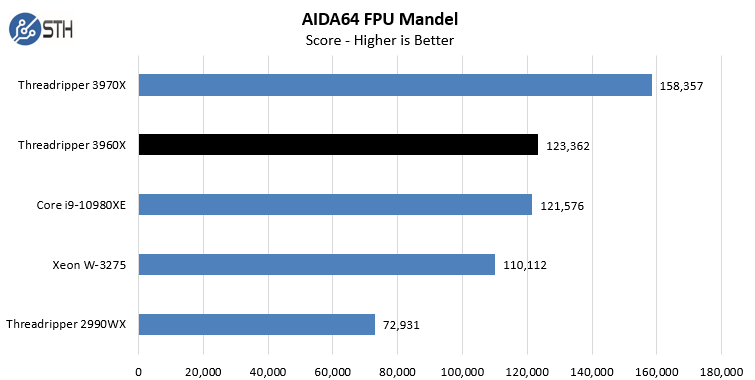
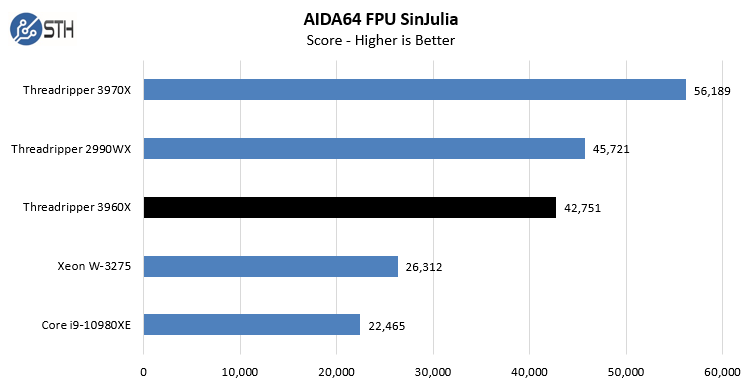
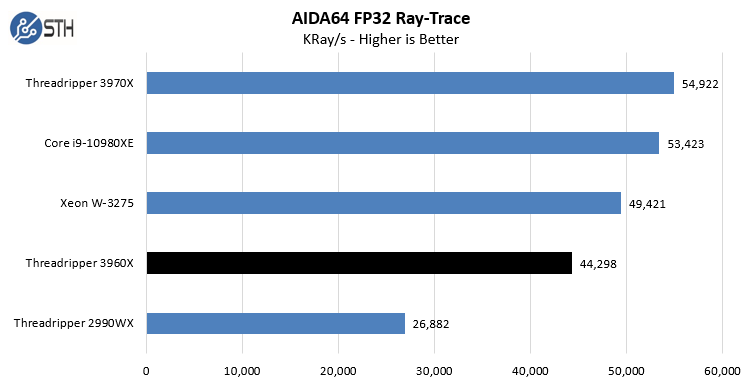
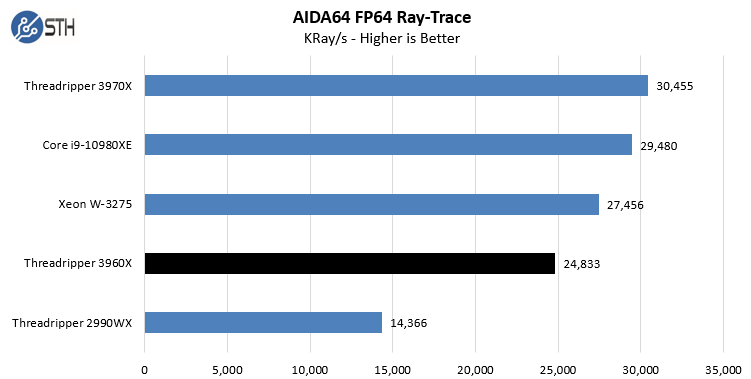
Overall solid performance generally beyond that of the previous-gen 32 core 2990WX. We also see performance figures from the 3960X that rivals the much more expensive Xeon W-3275. Here, the Intel Core i9-10980XE was able to notch some victories even with fewer cores and a much lower price tag.
Next, we are going to look at our Linux benchmark results.




I’m hoping they’ll make RDIMMs available for the higher core count Threadrippers. I believe that the 32GB UDIMMs max out at 2666 mHz, so if you want 3200 you’re limited to 128GB. That’s not a lot to feed 128 vcores.
Ryan, have you encountered SCALEMP?
They are the OEM of Intel Optane RAM impersonation drivers.
Grab the most consistently low latency drive you can and go.
Would be great if you can test some of W-22xx family too. I’m most curious if their 165W TDP is a real thing as is in case of TR (which is on 280W these days) or this is just Intel and things go way up over that limit too like i9.
Hi KarelG – we are working on that.
Fully vetted/certified ECC(All Kinds) support is maybe not going to be provided for TR/Consumer parts by AMD/Motherboard makers and most of the Pro Software packages that really need either Epyc/Xeon branded parts.
If AMD creates a Pro Threadripper/MB True Workstation Branding it’s going to have to cost similar to the 7H02 series parts and AMD’s EEE division that’s currently over Epyc/Professional systems will not want any product segment cannibalization. That said if the TR 3000 series 48 and 64 core parts were limited to say 6 memory channels max and some more limited PCIe 4.0 lane counts compared to Epyc/SP3 then maybe that could be offered, but that’s without the full ECC memory types support where AMD/MB vendors spend extra on the proper CPU/MB certification/vetting process that does not come cheaply.
In not very many more business quarters AMD’s Epyc CPU/Pro GPU Accelerator sales will begin the process of dwarfing AMD’s consumer divisions in the revenue category and AMD’s golden cow will most certainly come from Professional Compute/AI and Server/HPC market revenues where the margins are there and most will pay and write that expense down on their taxes. AMD will have to be more like Intel in that regard in order for AMD to get the revenue stream going to compete with Intel longer term. So AMD has to push its gross margins ever higher or Intel will eat them on the R&D investment side.
It’s just too unfeasible for AMD/Pro MB partners to pack the full Professional feature sets into any consumer branded/priced parts and lose that needed gross margin and revenue growth that’s necessary to compete with the giant Intel empire. AMD maybe has another 2 years at most to get its market cap and revenues high enough to fend off Intel after that time frame expires and Intel’s proper reply has been fielded. AMD really needs to remain as active as a garden shrew on the R&D side of things and that’s going to need higher margins to fund.
@DiscoShrewzRevenuez
With its current product lineup, AMD is leaving a couple of gaps open, for Intel to have SKUs that have no direct competitor.
The first is the strange decision to not have a 16 core TR 3000 part. AMD claims that TR demand is top heavy, but still. This leaves open a gap for the 14 and 18 core X299 parts to fit in, for those who need more memory capacity, more memory bandwidth or more PCI-E lanes than what AM4 can provide.
The second, IMO more significant oversight is not competing with the Xeon-W lineup, which brings both high clockspeeds and tons of ECC RAM to the table, *at the same time*.
EPYC cannot compete with Xeon-W, because there are no frequency-optimized Rome parts.
TR cannot compete because it does not support ECC (L)RDIMMs.
Maybe the rumored TRX80 platform will be the Xeon-W competitor? With 8 channels of (L)RDIMMs?
@Anon: I somewhat agree about your first point – I got a TR1920X as a cheap entry into a terrific platform (little did I know that it will taken behind the barn and shot at first chance). But it’s much less important than your second point, that I totally agree with.
Even if they put out a higher tier TR with 8 channel RDIMM support as is rumored, they are in a tight spot. It’s really disqueting to see how quickly AMD adopts Intel’s artificial segmentation behavior once they are in the lead. In my opinion, the current TR3 platform doesn’t offer substantial advantages over the first TR platform but the price is huge (at least in terms of mindshare) – breaking compatibility. It should have had 96 PCIe lanes and 4 channel RDIMM support. Then it would have covered much wider set of use cases and would have provided real justification for the compatibility break. Now it’s just “meh” (with a lousy fan on top – I’m talking about the chipset obviously) while leaving a big market gap open.
BTW, I guess it’s not too late for AMD to offer frequency optimized Epyc. That would seal the gap from above.
Would be great if you could run the STH Linux benchmarks, especially the Kernel Builds per Hour.
Here we’re running lots of cross compilings to build embedded Kernels: Buildroot, Xilinx toolchain, Android toolchain, among others, make intensive use of X86 processors. Android build can last 3 hours on the Skylake family processors, even with a SSD. What can we expect from Threadripper ?
CyrIng – This is on page 5 of the review.
I really was hoping to hear more about the WRX80 Chipset for the TR3 by now. I would love to see a more Workstation oriented Chipset/Motherboard for the TR3. A Motherboard with express support for ECC Ram and also a few more PCIe slots and supports all TR3 chips.